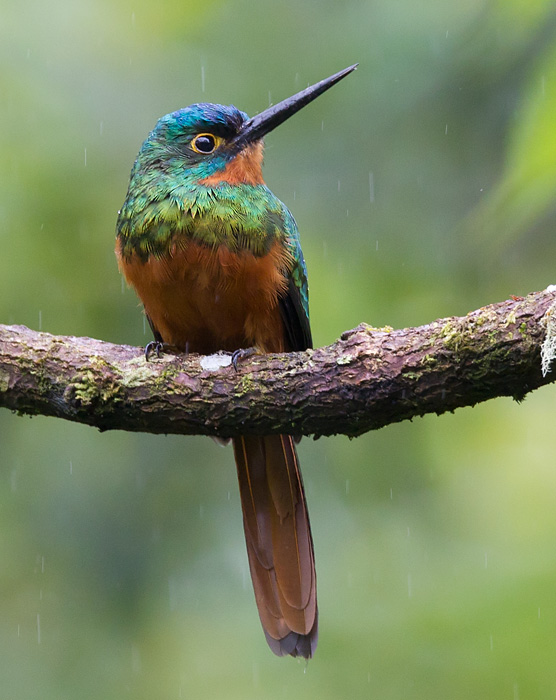
Galbula pastazae
TAXONOMY
Galbula pastazae Taczanowski and Berlepsch, 1885.
OTHER COMMON NAMES
French: Jacamar des Andes; German: Kupferglanzvogel; Spanish:
Jacamar Cobrizo.
PHYSICAL CHARACTERISTICS
9 in (23 cm) long. Heavier 2 in (51 mm) bill. Metallic green
upperparts, dark rufous throat, copper tail, distinctive yellowish
orange eye ring.
DISTRIBUTION
Colombia, Ecuador, and Amazonian Brazil.
HABITAT
Lives in the highest forest elevation of all jacamar species.
BEHAVIOR
Alert hunter, similar to other jacamars. Gives a series of three
to five loud calls.
FEEDING ECOLOGY AND DIET
Diverse variety of flying insects. Prefers to hunt from one favorite
perch, capturing insects as they fly through the air.
REPRODUCTIVE BIOLOGY
Lays one to four white eggs in curved ground-hole nest cavity,
so eggs are out of view. Incubation is 20–23 days. Chicks
emerge from nest after 21–26 days, covered with white down.
Both sexes incubate and care for chicks.
CONSERVATION STATUS
Vulnerable; thin
DISTRIBUTION
, low population limited to a few
locations, primarily in Colombia and the east slope of the Andes.
Threatened by deforestation.
SIGNIFICANCE TO HUMANS
None known.
Other popular Animals
Photo Gallery of - Coppery-chested jacamar
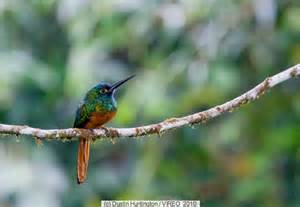
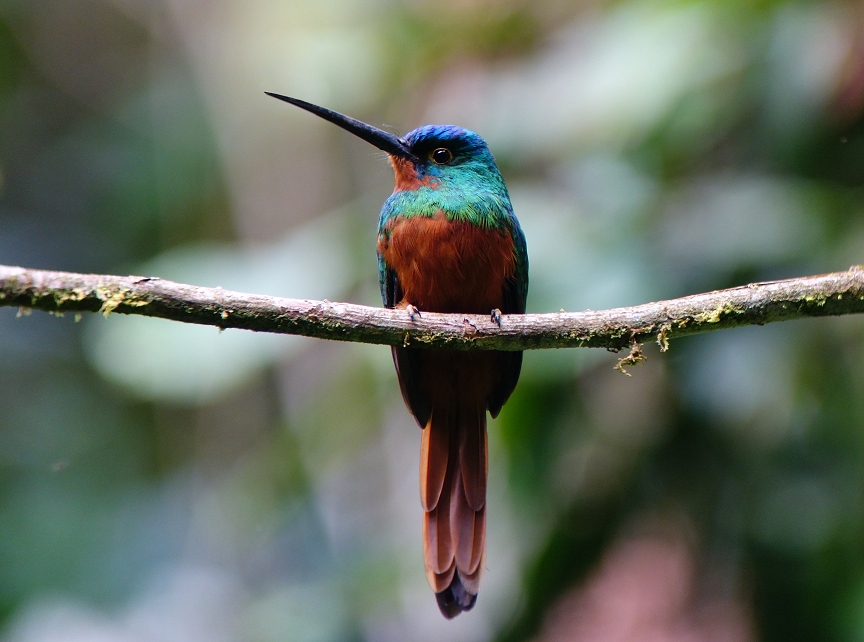
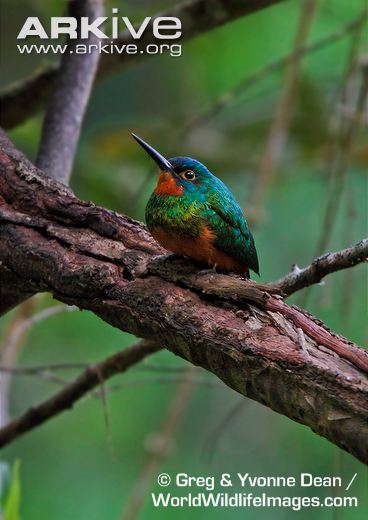
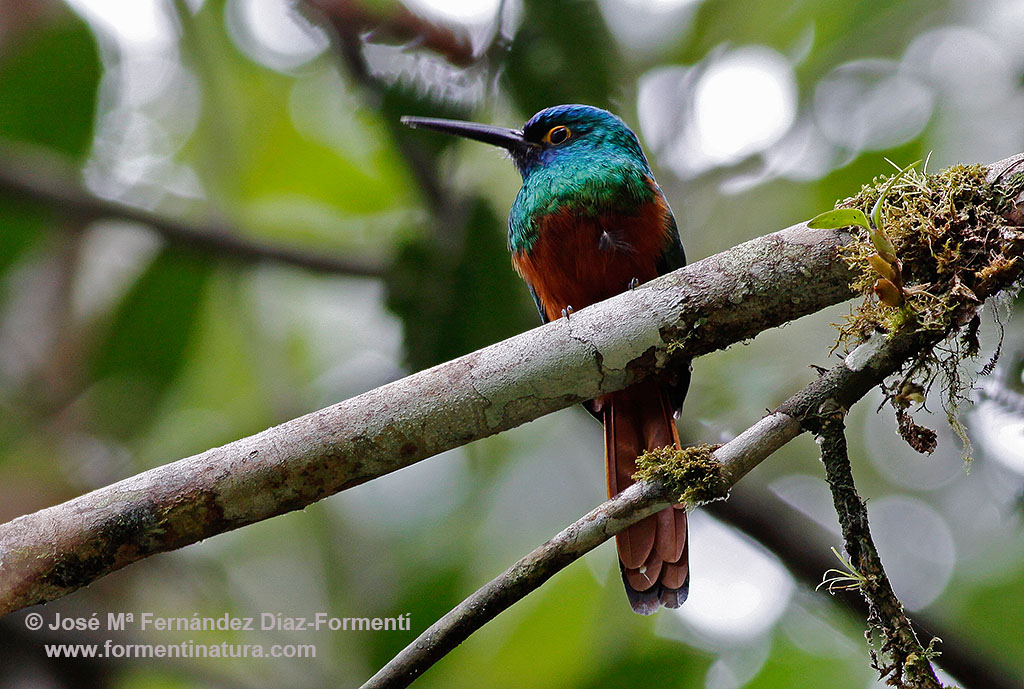
 Animalia Life
Animalia Life